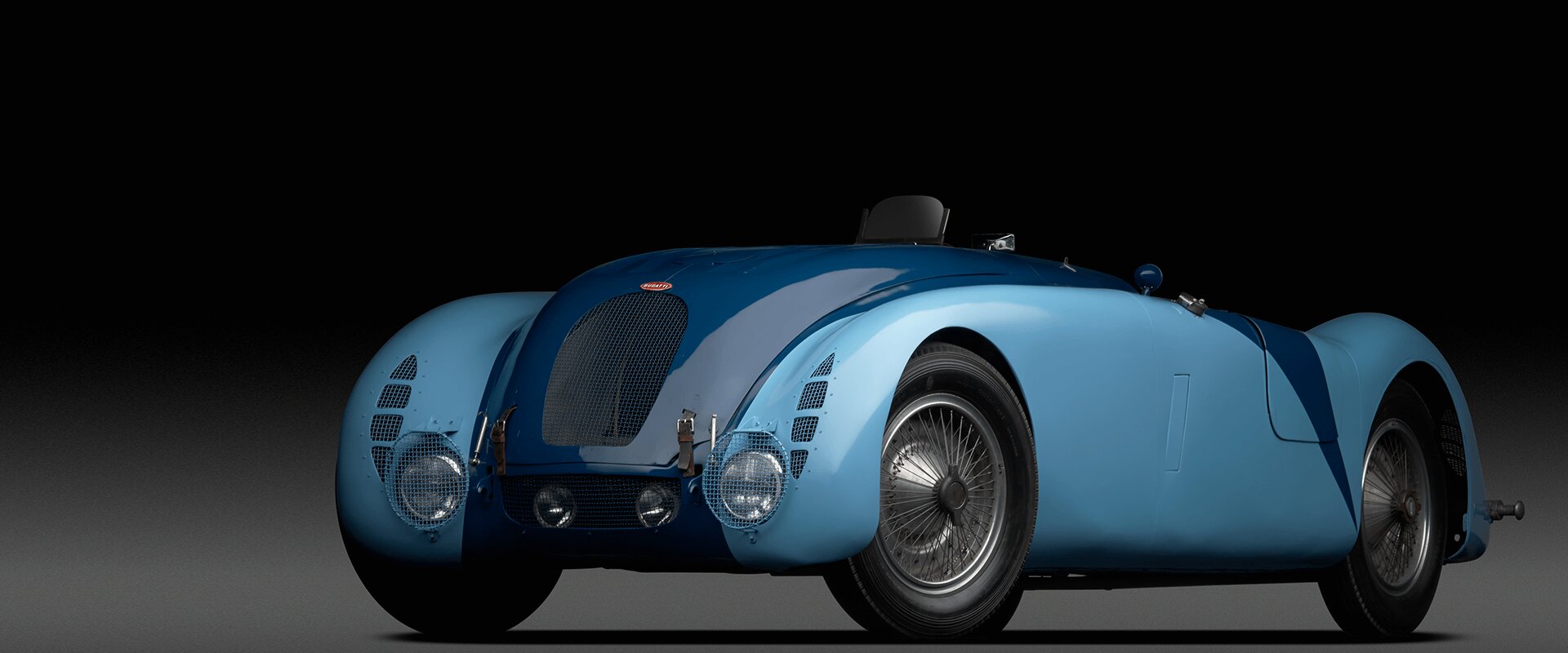1936 Bugatti Type 57 G Tank

The descriptions of the Classic Cars in the Directory were partly generated or supplemented with the help of artificial intelligence (AI). The content may occasionally not always be entirely accurate or factually correct despite careful checking.
The Bugatti Type 57 G Tank 1936 is a true masterpiece of automotive engineering. As one of the most iconic race cars of the pre-World War II era, it is renowned for its impressive technical specifications and distinctive design.
At the heart of the Type 57 G Tank is its advanced engine. The 8-cylinder inline engine is capable of producing up to 200 horsepower, allowing the car to reach a top speed of over 200 km/h. To achieve this impressive performance, the engine features a number of cutting-edge technologies, including twin overhead camshafts and dry-sump lubrication. This provides the car with a smooth and powerful driving experience, even at high speeds.
But the Type 57 G Tank's technical prowess doesn't stop there. The car also features a streamlined body design, with a low and wide stance, and a distinctive "tank" shape. This design was specially developed to improve the car's aerodynamics, allowing for faster speeds on the race track. To further improve airflow, the car also features a unique dorsal fin that helps to stabilize the car at high speeds.
The chassis and suspension of the Type 57 G Tank also deserve special mention. The car features a lightweight and rigid chassis made from high-strength steel, which provides excellent handling and responsiveness on the track. The suspension system is equally impressive, with a sophisticated set of dampers that can be adjusted depending on the track conditions. This allows the car to handle a wide range of different terrains and driving scenarios with ease.
Other notable technical features of the Type 57 G Tank include its innovative hydraulic brakes, which provide exceptional stopping power, and its advanced gearbox, which can be shifted quickly and smoothly using a unique racing-style lever. The car also features a number of advanced safety features, including roll bars and a fire suppression system.
Overall, the Bugatti Type 57 G Tank 1936 is a true masterpiece of automotive engineering. Its impressive technical specifications and innovative design have made it an icon of the race track, and a timeless classic that continues to captivate automotive enthusiasts to this day.
Milestones
- The Bugatti Type 57 G Tank was designed by Jean Bugatti and built in 1936. - It made its debut at the Le Mans 24-hour race in June 1936. - The Type 57 G Tank was powered by a supercharged 3.3-liter inline-eight engine that produced 200 horsepower. - The car had a lightweight aluminum body and was incredibly fast, achieving speeds of over 130 mph. - At the 1937 24 Hours of Le Mans, the Type 57 G Tank finished first and second in its class, and third overall. - Bugatti continued to improve the car, with a revised version featuring a new chassis and improved suspension debuting in 1937. - The Type 57 G Tank went on to win the 24 Hours of Le Mans in 1939, driven by Jean-Pierre Wimille and Pierre Veyron. - Following World War II, the Type 57 G Tank was restored and continued to race in vintage events, winning several races in the 1950s. - Today, the Bugatti Type 57 G Tank is considered one of the greatest racing cars of all time and is highly prized by collectors.Technical
- The Bugatti Type 57 G Tank was a racing car produced by Bugatti between 1936 and 1937. - It was designed by Jean Bugatti, son of the company's founder, Ettore Bugatti. - The car featured a streamlined body with an aerodynamic shape, which helped it achieve high speeds on the track. - It was powered by a 3.3-liter, supercharged inline-8 engine that produced up to 200 horsepower. - The car had a top speed of over 200 km/h (124 mph) and could accelerate from 0 to 100 km/h (62 mph) in just under 7 seconds. - The Type 57 G Tank was equipped with a 4-speed manual transmission and hydraulic drum brakes on all four wheels. - It had independent front suspension and a live rear axle with semi-elliptical leaf springs. - The car was built on a steel ladder frame chassis and featured an aluminum body. - The Type 57 G Tank won its class at the 24 Hours of Le Mans in both 1937 and 1939, as well as numerous other races throughout its career. - Only three examples of the Bugatti Type 57 G Tank were built, making it a rare and highly sought-after collector's car today.